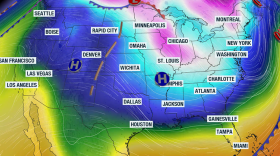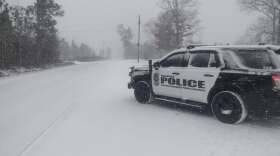-
More than 122 million Americans are expected to travel during the busy holiday period, with generally quiet weather across much of the country but stormy conditions along the West Coast.
-
A transition into neutral and even an El Niño status in 2026 will have significant climate impacts across the U.S. and around the world.
-
A strong cold front will bring much colder air to Florida late this weekend and early next week, with lows dropping into the 20s and 30s across northern Florida.
-
The Florida Department of Transportation says it has boosted its winter-weather preparedness following lessons learned from January's historic winter storm.
-
A low-pressure system will get stuck in the Southeast, keeping some fronts at bay right over northern Florida—significant contrasts in temperatures and humidity between the southern and northern halves of the State.
-
A series of storm systems will impact travelers over the weekend and early next week, bringing heavy snow to the Great Lakes, including Chicago.
-
There will be a bit of everything across Florida during the Thanksgiving holiday: heat, storms, cooler temperatures, winds, and bone-dry air!
-
The Thanksgiving holiday travel period is underway with AAA estimating nearly 82 million Americans will travel via either land or air to their destinations.
-
Two cold fronts push through this week, South Florida will not feel many changes until after the second front pushes through, after Thanksgiving!
-
The 2025 Atlantic hurricane season runs through the end of the November, but without any expected development, forecasters have released their seasonal summaries.
Play Live Radio
Next Up:
0:00
0:00
Available On Air Stations










